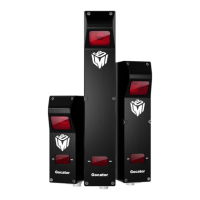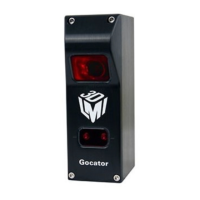Gocator Line Profile Sensors: User Manual
How Gocator Works • 73
For more information on feature points, see Feature Points on page 204.
Tool Data
Some measurement and processing tools can output more complex data, which can be used as input by
other tools or SDK applications. The following types of data are available: Profile, Surface, and Generic.
Profile and Surface tool data are identical in nature to the data produced by a sensor scan, except that
they are the processed result from a tool. This kind of data can be used as input in compatible tools.
Examples of this kind of this kind of data are the Stitched Surface output from the Surface Stitch tool, or
the Corrected Surface output from the Surface Vibration Correction tool. Another important kind of
data is the Transformed Surface produced by the Surface Transform tool, which transforms (shifting or
rotating on the X, Y, and Z axes)the sensor's scan data; the Surface Transform tool supports a full 6
degrees of freedom. For more information, see Transform on page 389.
Both Profile and Surface tool data can be visualized in the data viewer, not as an overlay, however, but as
independent data. The following is the output of the Surface Vibration Correction tool. Note that the
first drop-down is set to Tool, to tell the sensor to display the tool data output, rather than the sensor
output:
